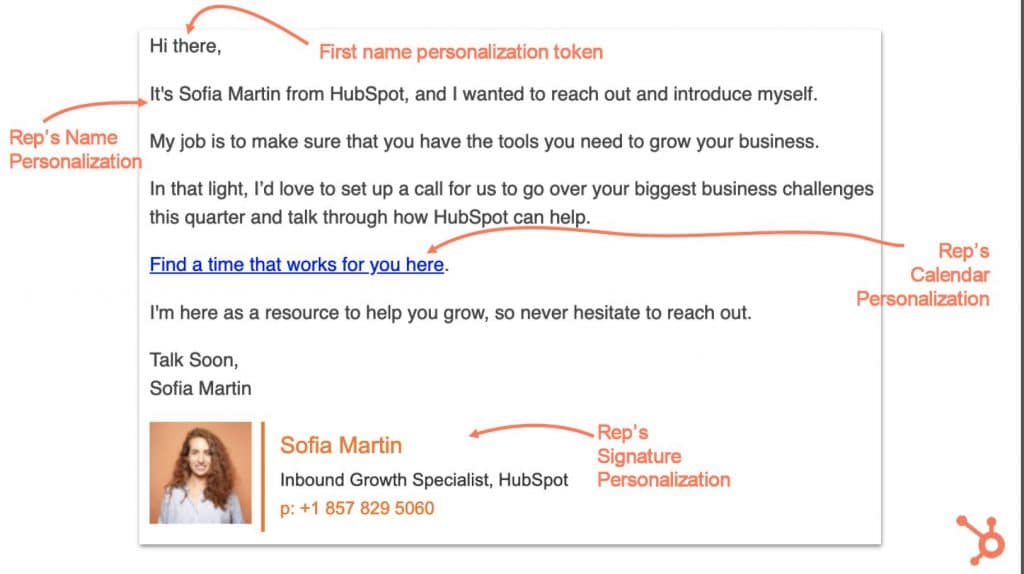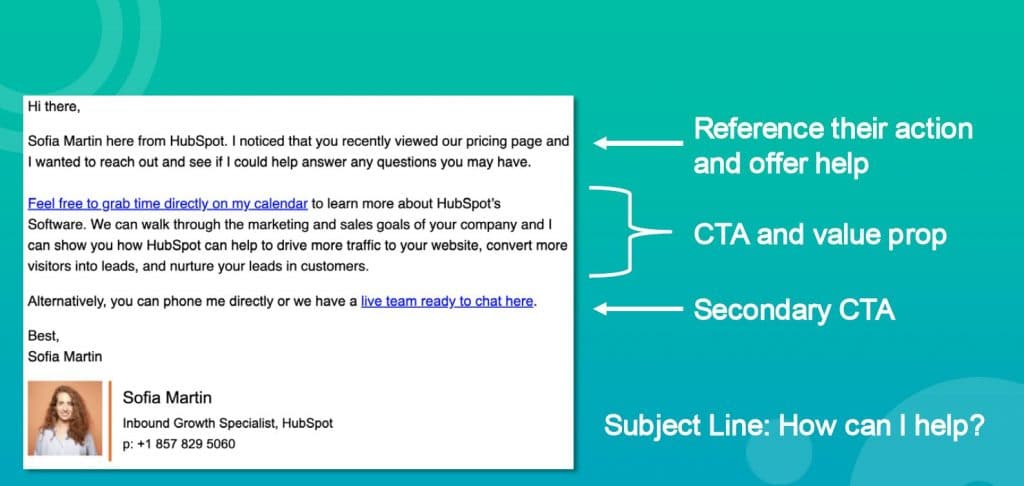At Inbound 2019 I attended a session billed as giving the inside information on HubSpot’s email nurturing campaigns. Although we didn’t really get that complete “under the hood” view of what HubSpot does, we did get some interesting insights into two different types of emails that HubSpot uses during their nurturing process: marketing and connection emails.
An Overview of HubSpot’s Emails Nurturing Campaigns
Email is HubSpot’s most successful communication channel, despite the large number of different channels available. It’s interesting that despite the huge number of features providing social interaction, chatbots and other new communication channels, good old email is still the king of communications when it comes to B2B sales.
During the presentation we were presented with some high level rules for nurturing: make the content customer-centric, not company-centric; target and personalise to ensure relevance; and focus on continual improvement, rather than adopting a set-and-forget mindset.
An interesting insight was that the first email HubSpot sends new contacts who requested a content offer is one with buttons allowing them to indicate their biggest challenge. This approach – dubbed “choose your own adventure” by HubSpot – is an interesting idea and something we have tried in the past. If someone indicates their most important challenge, and HubSpot follows-up with a relevant email then 65% open rates and 60% CTR can be achieved! These follow-ups are the best-performing emails that HubSpot sends.
Although it’s a fantastic way to personalise content to the people who click to indicate their interests, we’ve found low click-through rates from our clients’ primary audience: engineers. You will be able to target to the people who respond, but in our experience the majority won’t, leaving you without a way to understand their challenge. The presenter didn’t discuss how HubSpot deals with this problem.
The presenter made a good point around gating content: if someone clicks through from an email, you should serve them ungated content as you know who they are because you emailed them. It’s an obvious thing to say, but we’ve seen campaigns where you keep having to fill in forms.
There are a couple of counter-arguments to this: the first is that if the email is forwarded to a colleague who clicks through then you don’t capture that contact. Progressive profiling is also a way to increase personalisation, so including forms can be a good way to deliver even more relevant content. We are therefore on the fence on this one: in our campaigns we do sometimes have ungated content and sometimes ask for more information where we think it will be beneficial.
The nurturing campaigns HubSpot runs send emails every 3 days. This is a result of a lot of testing, and HubSpot has seen different frequencies working better in some industries, but an email every three days is probably a good place to start! In addition to nurturing campaigns, HubSpot sends a single send (promo email, newsletter, etc) on a weekly, or sometimes fortnightly, basis. All these emails are sent based on the recipients’ time zone: this is also something that HubSpot has found to be important to optimise results.
What’s a Connection Email?
We’re all familiar with marketing emails, but what does HubSpot mean by a connection email? Well, they send personalised emails from a (real) sales rep as part of their nurturing campaigns, interleaving marketing and these connection emails.
These connection emails are designed to look like a “real” email written in plain text but is automated in the marketing workflow. One of their connection emails is analysed in the photo below:
Although sent from a salesperson, the email is not a classic “sales” email: it’s about helping to make sure the recipient has the tools they need. All these emails have a signature from the salesperson assigned to the account, and even include the rep’s photo.
As a connection email, it’s all about trying to build a relationship and initiate a conversation. The email even has a link to let the recipient book a call with the salesperson.
Connection Emails in Trigger Nurturing
When a contact is already on the database and conducts a high-value action (in HubSpot’s case this might be a download or a view of the pricing page), they initial a trigger nurturing campaign. The first email in this campaign is a connection email designed to try to re-start the conversation with the contact:
Interestingly HubSpot uses the very simple subject line “How can I help?”. This isn’t because they didn’t bother trying anything else – they’ve done a lot of testing – and this simple subject line is the one that performs best.
The first email in the trigger nurturing is sent immediately. It’s the speed of response that is possible with marketing automation that makes these emails so effective (we’ve run many campaigns were we’ve found that speed is the critical factor in maximising conversions so we definitely agree with this). The alternative to trigger nurturing is an internal notification, highlighting the action and triggering the rep to try to reach the contact. Because of the inevitable delays when humans are involved (particularly outside working hours), HubSpot has found that trying to call the contact is less effective. The immediate follow-up connection emails achieve an impressive 55% open rate and a 15% CTR. The fact that the objective is to arrange a call makes the CTR very impressive and the CTA is for a very high value action.
Three Email Nurturing Insights
My top three insights were:
- Campaigns need to include connection as well as marketing emails. This is a very different approach to many B2B companies and something that generates great results for HubSpot. We’re going to be testing it in different industries to see if the benefits are universal or industry specific.
- Speed is the key: sending an email immediately someone conducts a high-value interaction on a website is much more valuable than asking a sales rep to follow-up.
- HubSpot sends nurturing emails every three days. Although this might not be a universal number, it’s more frequent than a lot of B2B campaigns and so we should all stop being precious over rules of thumb like “no more than one email per week” and start testing to see what really works for our prospects.
Source
These notes were taken when I attended The Inside Scoop: HubSpot’s Email Program at Inbound 2019 presented by Jordan Pritkin, Head of Email Marketing and Growth at HubSpot.
Author
-
In 2001 Mike acquired Napier with Suzy Kenyon. Since that time he has directed major PR and marketing programmes for a wide range of technology clients. He is actively involved in developing the PR and marketing industries, and is Chair of the PRCA B2B Group, and lectures in PR at Southampton Solent University. Mike offers a unique blend of technical and marketing expertise, and was awarded a Masters Degree in Electronic and Electrical Engineering from the University of Surrey and an MBA from Kingston University.
View all posts


